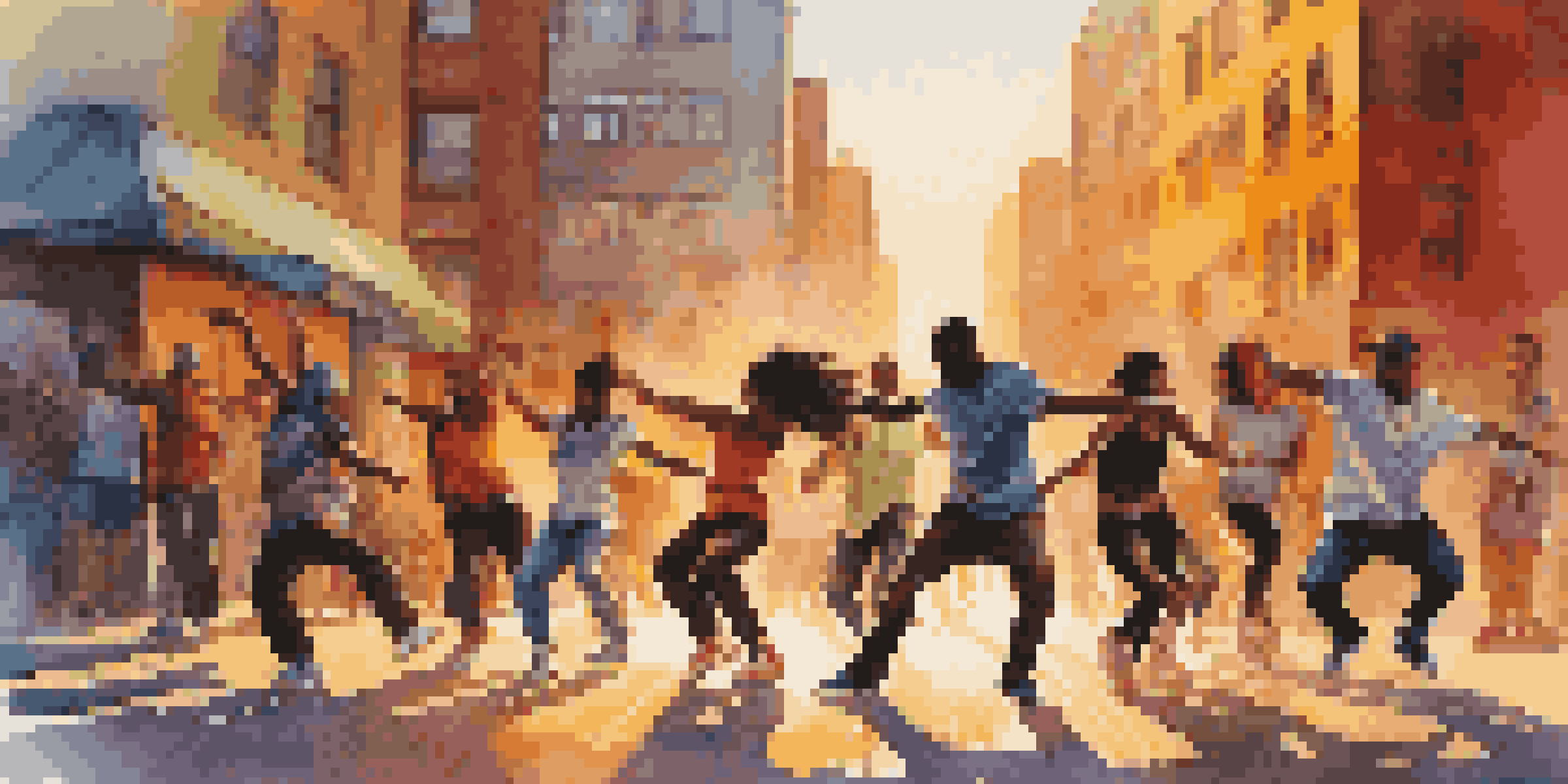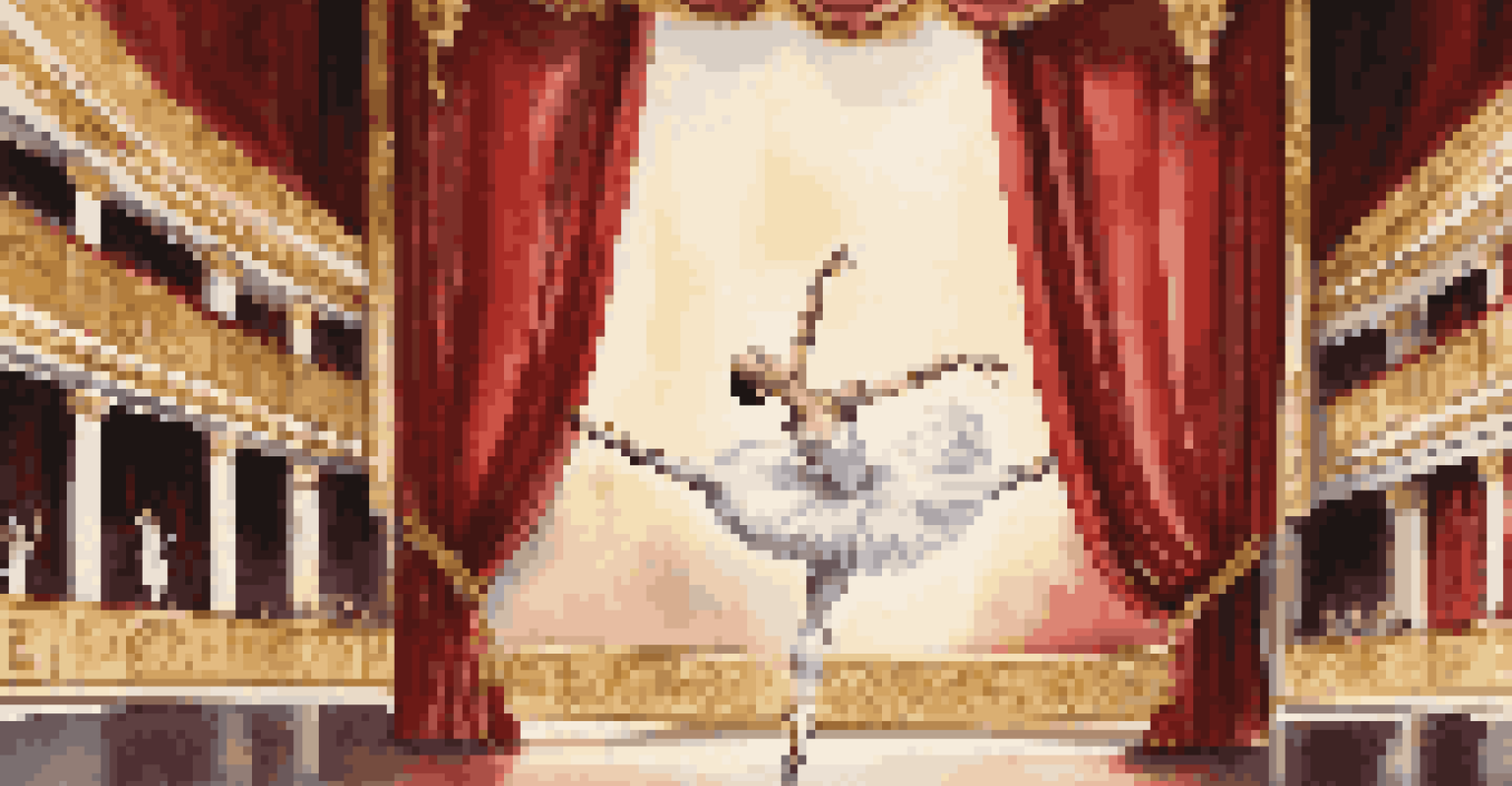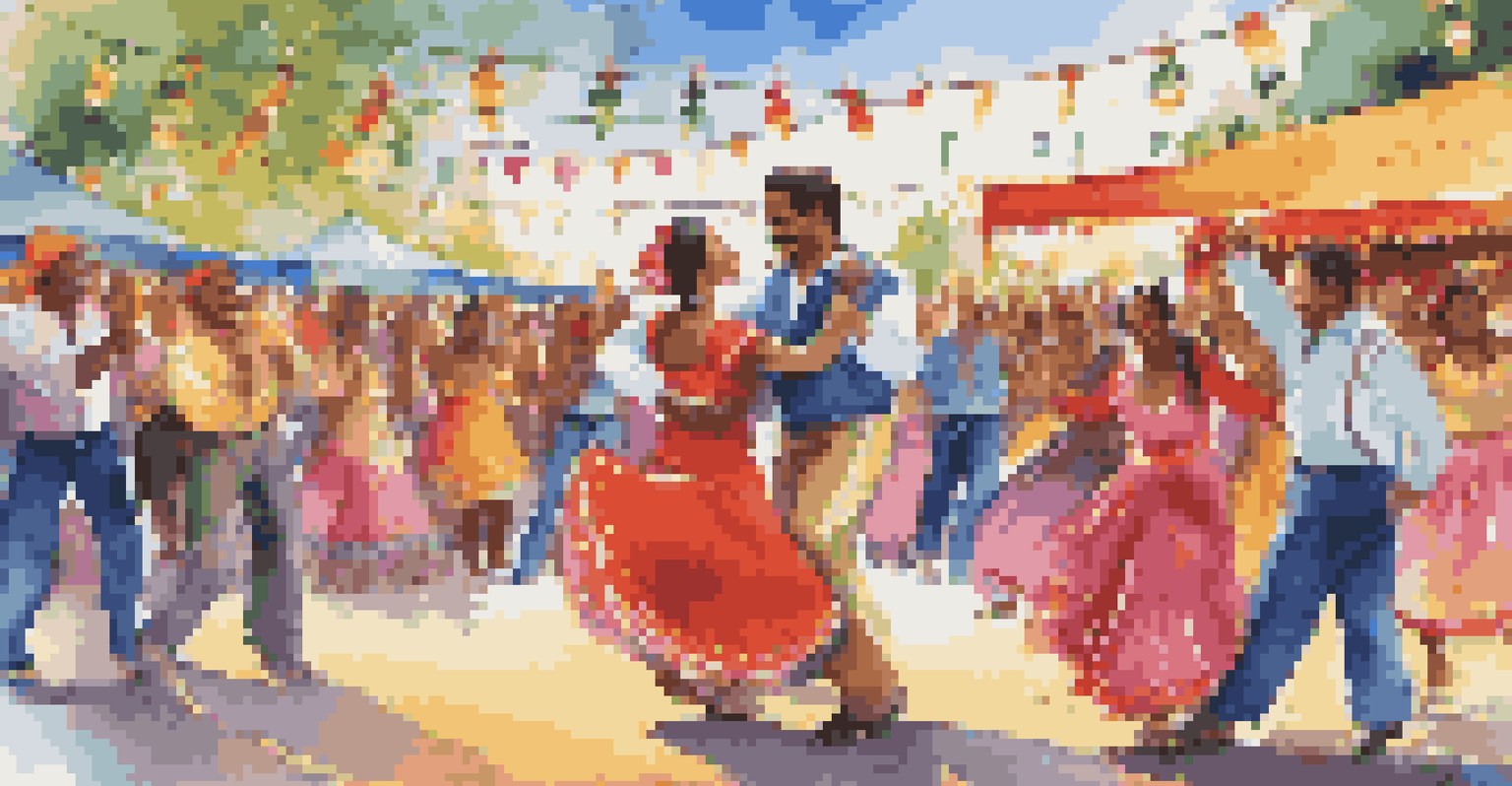Dance and Genre: How Different Styles Influence Film

The Essence of Dance in Film Narratives
Dance has been a powerful storytelling tool in film since the early days of cinema. It conveys emotions, character development, and cultural contexts without the need for dialogue. Think of iconic scenes like the dance numbers in 'Singin' in the Rain'—they elevate the narrative and engage audiences on a deeper level.
Dance is the hidden language of the soul.
In many cases, the type of dance reflects the film's genre. For example, ballet might be featured in a romantic drama, while hip-hop dances are more common in urban-themed films. This relationship between dance and genre helps to set the tone and resonate with viewers, making the film more relatable and vibrant.
Moreover, dance can serve as a metaphor within films, symbolizing freedom, struggle, or connection. As audiences witness characters express themselves through movement, they often find parallels to their own experiences, making the film's message more impactful.
How Genre Shapes Dance Styles in Film
Genres often dictate the style of dance portrayed in films. For instance, action films may include high-energy choreography that emphasizes athleticism and adrenaline, while musicals often showcase elaborate and synchronized routines. Each genre has its conventions that influence the choreography's complexity and presentation.

Moreover, the historical context of a genre can also dictate the dance styles featured. Films set in the 1920s might showcase jazz dance, capturing the spirit of the era, whereas contemporary films may lean towards modern dance styles. This alignment enhances the authenticity and immersion of the story.
Dance Enhances Film Narratives
Dance serves as a powerful storytelling tool that conveys emotions and character development without the need for dialogue.
Audiences familiar with specific genres often have expectations about the type of dance they'll see, which can create a satisfying experience when those expectations are met. Conversely, unexpected dance styles can surprise viewers, adding depth and intrigue to the film.
Cultural Reflections: Dance as a Genre Indicator
Dance styles in film are often reflections of cultural backgrounds, making them powerful indicators of a film's genre. For example, salsa and tango dances typically appear in passionate romantic films, while traditional folk dances may highlight cultural heritage in dramas. This connection to culture adds layers to the storytelling.
The only way to make sense out of change is to plunge into it, move with it, and join the dance.
By incorporating diverse dance styles, films can celebrate various cultures, encouraging a broader understanding and appreciation among audiences. A film like 'Coco' beautifully integrates Mexican dance traditions, enhancing the narrative and cultural significance.
Moreover, the representation of dance can challenge stereotypes within genres. By showcasing dance styles that defy expectations, filmmakers can create narratives that are more inclusive and multifaceted, inviting audiences to reconsider their preconceived notions about culture and genre.
Iconic Dance Scenes and Their Genre Significance
Think of the unforgettable dance scenes in films like 'Dirty Dancing' or 'West Side Story.' These moments are not just visually stunning; they encapsulate the essence of their respective genres. The dance sequences often serve as the emotional climax of the film, leaving a lasting impression on viewers.
In 'Dirty Dancing,' the dance symbolizes personal growth and liberation, while 'West Side Story' uses dance to portray the tension between rival gangs. Each scene is meticulously crafted to enhance the film's narrative and emotional depth, demonstrating how integral dance is to genre storytelling.
Genre Influences Dance Styles
Different film genres dictate the style of dance portrayed, with specific choreography reflecting the mood and context of the narrative.
These iconic moments also influence future filmmakers and choreographers, setting standards for how dance is used in storytelling. They remind us that well-placed dance can become a hallmark of a genre, inspiring audiences for generations to come.
The Evolution of Dance in Film Genres
Over the decades, the portrayal of dance in film has evolved significantly, reflecting changes in societal norms and artistic expression. In the past, dance was often more formal and structured, adhering to classical styles. As genres have diversified, so have the types of dances showcased on screen.
With the rise of street dance and hip-hop in popular culture, films began to incorporate more informal and contemporary styles. This shift highlights the growing acceptance of diverse dance forms, allowing filmmakers to connect with younger audiences and reflect modern lifestyles.
The integration of technology has also transformed how dance is filmed and choreographed. Today, filmmakers can use innovative techniques like CGI to create stunning visual effects that enhance dance sequences, pushing the boundaries of what is possible in film genres.
Dance as a Cross-Genre Element in Film
Dance often acts as a bridge between genres, creating unique hybrid films that defy traditional categorization. Movies like 'La La Land' combine romance, drama, and musical elements, using dance to seamlessly blend these genres into a cohesive narrative. This cross-genre approach opens up new avenues for storytelling.
By experimenting with different dance styles, filmmakers can create fresh and engaging narratives that appeal to a diverse audience. For instance, a romantic comedy that incorporates breakdancing can provide comedic relief while also showcasing impressive choreography.
Cultural Reflection in Dance
Dance styles in film often reflect cultural backgrounds, enriching the storytelling by celebrating diversity and challenging stereotypes.
These hybrid films not only entertain but also challenge viewers' expectations, inviting them to experience a richer, more dynamic storytelling experience. As genres continue to evolve, dance remains a vital element in crafting innovative films.
The Future of Dance in Film Genres
As we look to the future, the role of dance in film is likely to expand even further. With the rise of streaming platforms, filmmakers have more freedom to explore innovative narratives that incorporate diverse dance styles. This shift allows for greater experimentation and creative expression.
Additionally, the growing awareness of global cultures is prompting filmmakers to include a wider variety of dance forms. This trend not only enriches the storytelling but also promotes cultural understanding and appreciation among audiences worldwide.

Ultimately, the future of dance in film will likely be characterized by collaboration between choreographers and filmmakers, creating a synergy that brings dance to the forefront of storytelling. This evolution will ensure that dance remains an integral part of how films communicate emotions and narratives across genres.